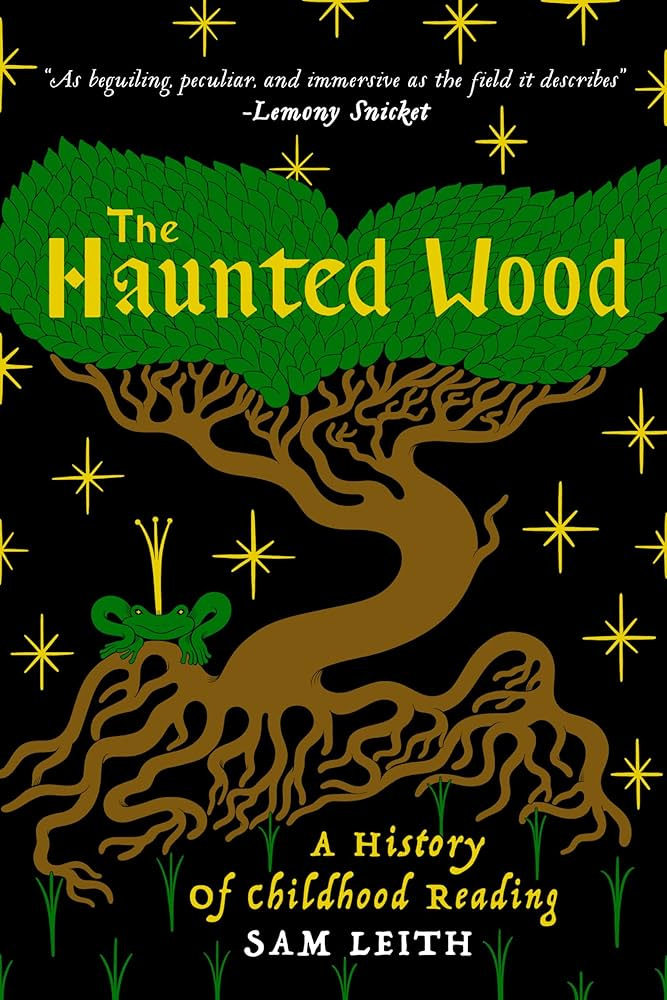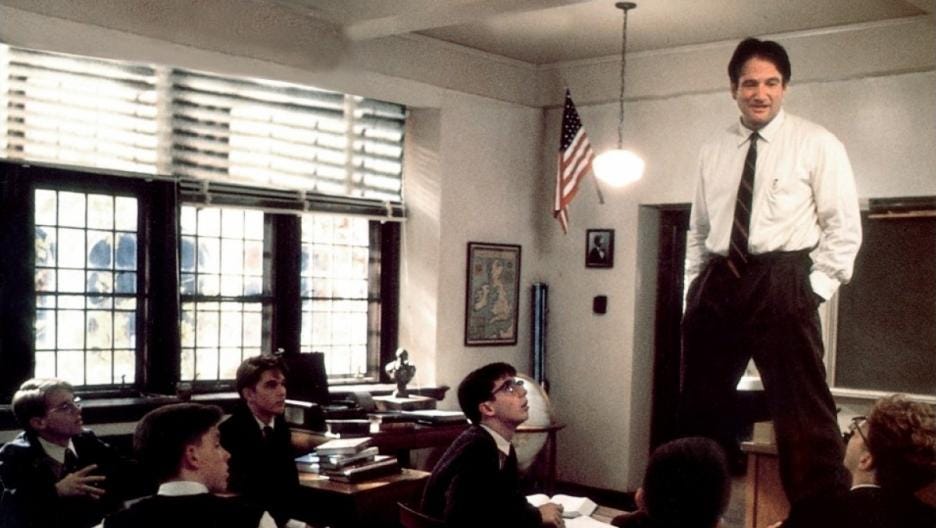I recently wandered into The Haunted Wood.
It’s a book about children’s stories that acts, as author Sam Leith argues, as a history of childhood itself. Because childhood (as we know it) is a relatively new idea.
Not that there was a time when kids didn’t have to grow. But as Leith expounds, “childhood” as a distinct, decades-long period of life—one for learning, freedom, and merriment—is new in history. So, as the book traces the changes in stories told to kids, it becomes a map of our very concept of childhood.
Good writing is a lot like children’s stories, and Leith is a professional. There’s a type of simplicity that dumbs down and there’s a type that refines, that elevates, that carries its treasures forward.
The Haunted Wood is a fascinating read, and it goes down easy. Every paragraph ends with a perfect conclusion sentence, and every chapter with a clear summary. This is the kind of book lazy students ought to love. He’s doing you every favor. Skim the endings of the paragraphs and you’re golden. In a bigger rush? Just read the chapter summary. You’ll make it through class, easy.
In this case, the book’s subject is quite interesting, so no need to cut corners. But you have to respect the craft when you see it.

When I taught last year, I had one student admit to skimming her readings this way, reading the first and last sentences of each paragraph. I couldn’t say in front of the class, but I was proud of her. She had real trouble reading, and this was a smart, thrifty way to compensate.
The thing is, with this method the “cheater” still learns something. Firstly, because they’re engaging the material firsthand. Secondly (and more importantly) it ingrains in them a crucial lesson about writing: you have to shape your thoughts.
In undergrad, one professor held up pages of text and asked us what we learned. Not from reading, from looking. You’d be surprised how much you can tell about a page’s contents from five feet away.
It’s often one of the first places I take people when helping them write. Skim your own stuff the way you’d skim others’.
The lessons teach themselves.
The student who knows how to skim will recognize better than anyone the benefits of proper organization. If I could do it again, I’d go give my student a high five. At least, I might turn it into an impromptu lesson.
I offer this all with some nostalgia. Because we know this is not how students cheat today. They aren’t poring over the elegance of The Haunted Wood’s craft (Sorry, Mr Leith). They’re using ChatGPT.
Just last week I overheard some college students, one of which must have been caught submitting an AI paper. What I heard was one student counseling the other: “That’s why you go in and misspell words before you submit. Then it looks real. I’ve gotten pretty good at it.”
Online learning works when you work it. I’ve been a beneficiary of that trend. But we know—all the research shows—that the learning methods we’re adopting quickest are the ones destroying our learning outcomes. It doesn’t help that classes are moving online at the exact moment AI becomes ubiquitous. It’s called machine learning: Chat learns to fly a plane, and America’s future pilots, surgeons, and politicians learn to mill through a finished paper to mess up some spelling.
You can see the problem: there’s no compensatory benefit to messing up an AI paper. According to my own discussions, and according to accounts from professors, students caught using ChatGPT can’t distinguish low and high quality writing. They can’t spot poor logic in others because they lack familiarity shaping their own thoughts.
So since reporting misuse can be a precarious, bureaucratic process, some professors have stopped reporting AI papers—and simply started grading them.
Students are appalled to see their Chat-written papers earn a C. They’re certain it must be wrong, but they’re clueless how to defend concepts they didn’t write, much less read.

Back to The Haunted Wood.
One of Leith’s fascinating reminders is that our assumption of childhood as a period for education is new. I’m not talking about college. Mass literacy, universal grade school—these are recent developments. For centuries children were useful, working as much as they could as early as they could. But technology rewrote the conditions, freeing up the years we would spend working to be spent learning.
And learning is its own kind of work. So as technology reshapes things again—making education itself an inconvenience—what’s next?
A few possibilities come to mind, and none pretty. Thankfully, as Leith registers, childhood is a young, ever-evolving category. We may work ourselves into a mess, but we can just as carefully work ourselves out.
I’m not hardline about the hard way. Good old-fashioned methods aren’t good just for being old. My point is not that we feel anxious about tech, nor is it that we feel guilt about the human desire to shortcut, to innovate, to find a quicker path.
My point (indebted to Leith) is that advancements create space, and we shouldn’t assume what we wouldn’t wish to lose. It’s up to us to relieve our difficulties in ways that sharpen rather than dull.
The story of childhood will continue to evolve, and with it the story of humanity. Like research papers and long-told tales, let’s take care to shape them well—instead of messing them up.





